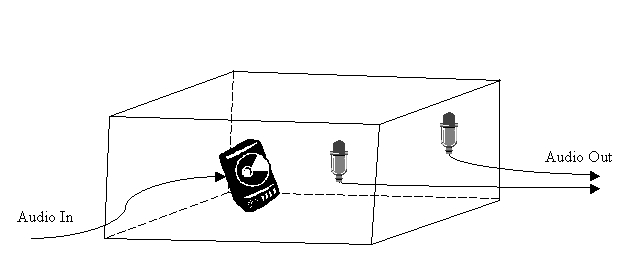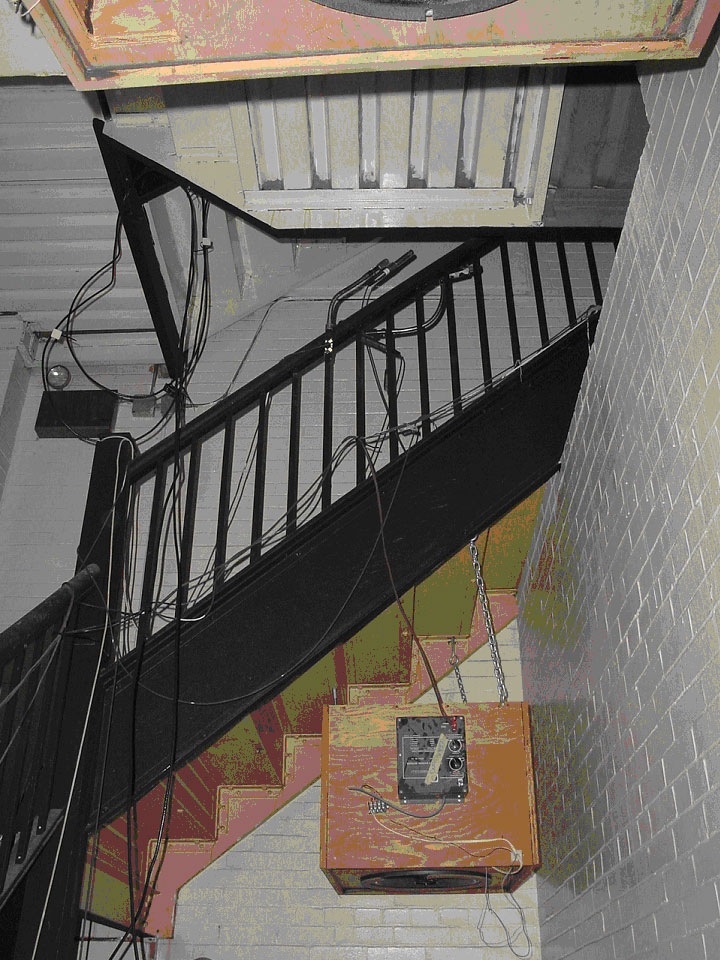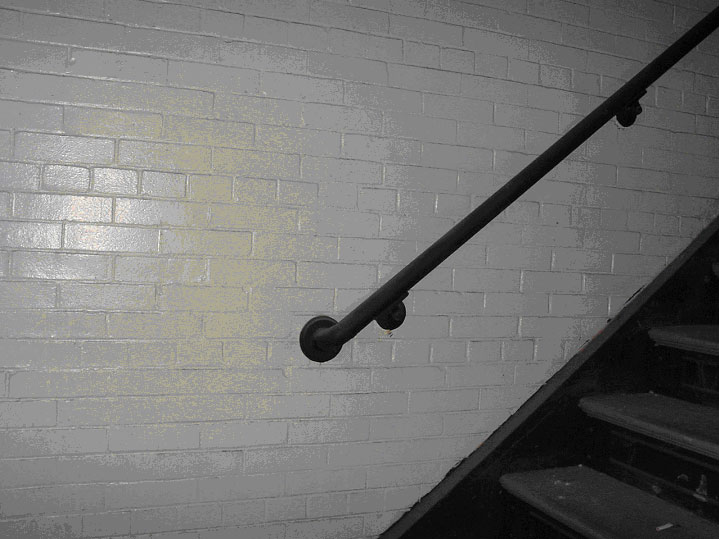Alex Case - alex@fermata.biz
fermata audio + acoustics
P.O. Box 1161
Portsmouth, NH 03802
Lay Language version of paper 4pAA2
Presented Thursday afternoon, May 272004
at the 147th Meeting of the Acoustical Society of America, New York City, NY
Standing outside of New York's Cathedral of St. John the Divine, clap your hands
once, or sing an aria (whichever you are more comfortable with). Step into the
cathedral, repeat your performance, and listen to the difference. Even if you
don't have the time to perform the above experiment, you pretty much know what
to expect. A single handclap outdoors ends as soon as it began, "Pop."
Inside, each handclap is augmented by a rich, lush wash of sound as this enormous,
ornate, stone cathedral offers a fantastically complicated set of sound reflections;
our humble clap of the hands becomes an ear tingling sensation of much longer
duration. If you sing an aria inside the cathedral, every syllable generates
its own pulsing pad of sonic support.
This wash of decaying energy associated with each sound event inside a space
is called reverberation. The length of time it takes to decay into near silence
is defined as reverberation time. It is likely that this single number, reverberation
time, is the most audible acoustic signature of any space. To be sure, many
other acoustic attributes are important. But as the story goes, if an acoustician
is trapped on a desert island and must build a hall using just one number ....
Reverb time is one of the most important, most studied parameters in room acoustics.
Two key architectural features of a room do much to determine the length of
time the reverb will last. First, the reverb time is directly proportional to
the size of the room - or, more precisely its cubic volume. The larger the hall,
the longer the room will reverberate. Second, the sound reflectivity of the
room surfaces drives the length of the reverberation. Rooms with hard, reflective
walls and ceilings (made of wood, steel, concrete and plaster) will have longer
reverb times than rooms with large quantities sound absorbing materials (such
as curtains, ceiling tiles, etc.).
Orchestras play in large, highly sound reflective spaces and each note they
play is rich with reverberation. Orchestral music sounds wrong without it. Popular
Music, on the other hand, is almost always recorded in small studios that have
little to no reverberation. It simply isn't economically viable for a recording
studio to have rooms as large as symphony halls and cathedrals.
But that doesn't mean that Pop Music exists entirely without reverberation.
In fact, the musicians and engineers who create popular recorded music view
reverberation as a signal processing effect to be added to any and all elements
of a multitrack production as desired. As a result, reverberating machines were
developed. Devices such as digital reverbs, spring reverbs and plate reverbs
are tools of the recording trade, synthesizing reverb-like sounds for performance
through loudspeakers.
While Pop Music reverberation is generally fabricated by a machine, it is occasionally
created the old fashioned way: by a room. Acoustic reverberation makes its way
into recorded music through the use of a Reverb Chamber, a small room used to
generate reverb (see Figure 1). With cubic volume well below that of a performance
hall, it pushes the other side of the equation, being built of highly sound
reflective materials. What a reverb chamber lacks in room volume, it makes up
for in sound reflectivity. However, as studios are often located in real estate-strained
urban areas (New York, Los Angeles, London, Tokyo, etc.), purpose-built rooms
for the generation of reverb are a luxury not many studios can afford. Clever
use of stairwells, bathrooms, and basements is easier on the recording studio's
balance sheet. New York City's Avatar Recording Studio is home to one of the
most recorded reverb chambers in the history of recorded music, the most famous
stairwell you've ever heard.
A multistory stairwell consisting of brick walls painted thick in glossy white
with steel stairs and landings (Figures 2, 3 and 4), Avatar Recording Studio's
Chamber One is a highly reverberant space that is part of many multi-platinum
records. From the Stones to Springsteen, David Bowie to Bryan Adams, rock and
pop artists use the reverberant quality of this curious place to make their
music sing. This humble stairwell in Midtown Manhattan has added flattering
reverberation to vocals, drums, guitars, organs, etc., broadcast via radio all
over the world, and enjoyed on records, tapes and CD's sold by the millions
for more than three decades. New York City has acoustic treasures known the
world over as Carnegie Hall and Lincoln Center. Add Chamber One to that revered
list.
 |
| figure 1: Reverb Chamber Schematic. A reverb chamber is simply a small, sound reflective room with a loudspeaker to introduce sound and some microphones to capture the reverberant result. |
 |
| Figure 2: The historic Chamber One at Avatar Studios is a multistory stairwell with loudspeakers and microphones. |
 |
| Figure 3: Typical wall treatment. Note shiny, thickly painted brick walls |
 |
| Figure 4: Typical stair detail. Note hard steel staircase material, also painted. |